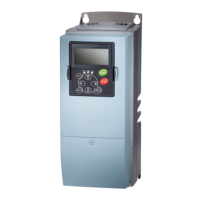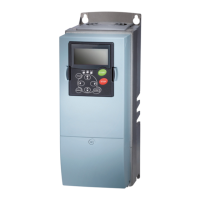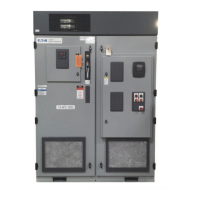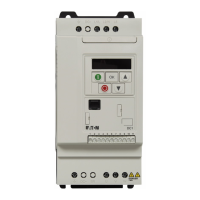SLX9000 Adjustable Frequency Drives User Manual
MN04003020E
For more information visit: www.eaton.com 9-25
January 2009
Motor Thermal Protection:
CAUTION
The calculated model does not protect the motor if the airflow to
the motor is reduced by blocked air intake grill.
The motor thermal protection is to protect the motor from overheating. The drive is
capable of supplying higher than nominal current to the motor. If the load requires
this high current, there is a risk that the motor will be thermally overloaded. This is
the case especially at low frequencies. At low frequencies the cooling effect of the
motor is reduced as well as its capacity. If the motor is equipped with an external fan,
the load reduction at low speeds is small.
The motor thermal protection is based on a calculated model and it uses the output
current of the drive to determine the load on the motor.
The motor thermal protection can be adjusted with parameters. The thermal current
I
T
specifies the load current above which the motor is overloaded. This current limit
is a function of the output frequency.
2.7.6 Motor thermal protection ID704
0 No Response
1 Warning
2 Fault, stop mode after fault according to parameter 2.1.12
3 Fault, stop mode after fault always by coasting
If tripping is selected, the drive will stop and activate the fault stage.
Deactivating the protection, i.e. setting parameter to 0, will reset the thermal model
of the motor to 0%.
2.7.7 Motor thermal protection: Motor ambient
temperature factor
ID705
When the motor ambient temperature must be taken into consideration, it is
recommended to set a value for this parameter. The value of the factor can be set
between -100.0% and 100.0% where -100.0% corresponds to 0°C and 100.0% to the
maximum running ambient temperature of the motor. Setting this parameter value
to 0% assumes that the ambient temperature is the same as the temperature of the
heatsink at power-on.
2.7.8 Motor thermal protection: Cooling factor at
zero speed
ID706
The cooling power can be set between 0 – 150.0% x cooling power at nominal
frequency. See Figure 9-18.

